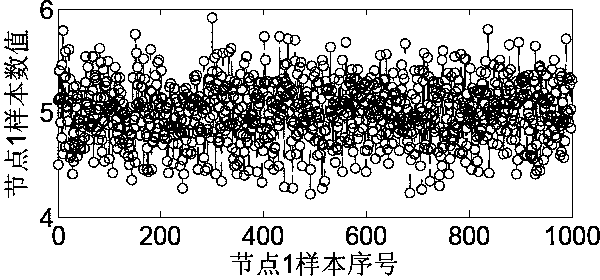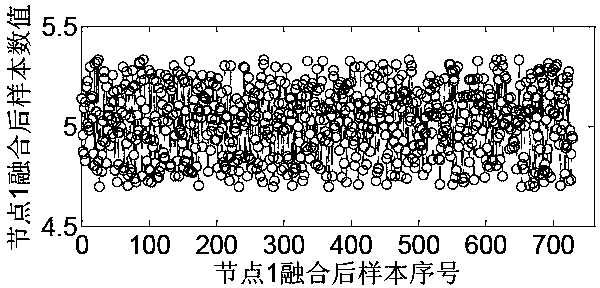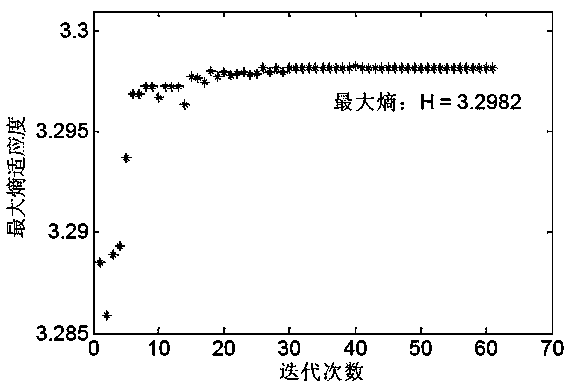Wireless sensor network outlier data self-adaption detecting method based on entropy measurement
A wireless sensor and self-adaptive detection technology, applied in wireless communication, network topology, electrical components, etc., can solve problems such as unsuitable for processing large-scale and rapidly changing data streams, affecting detection accuracy, and high time and space complexity
- Summary
- Abstract
- Description
- Claims
- Application Information
AI Technical Summary
Problems solved by technology
Method used
Image
Examples
Embodiment 1
[0108] Embodiment 1: Outlier data detection simulation.
[0109] In order to verify the performance of this method in outlier data screening and fusion in wireless sensor network clusters, the algorithm simulation is carried out on the NS-2 simulation platform. Based on the network model set above, the experiment uses the LEACH protocol to cluster 50 nodes respectively. The basic parameters are set as follows: the simulation time is 160s, one sink node, the initial energy is infinite, the initial node energy is 2J, the node positions are randomly distributed, the rotation period is 20s, and the number of cluster head nodes is 5. After the first clustering, the number of nodes in cluster 1 is 8, and each node generates a set of simulated data (1000) with a mean of 5 and a standard deviation of 0.3 within 20 seconds as the samples collected by the nodes.
[0110] figure 1 is the data sample produced by node 1 in cluster 1. The particle swarm optimization algorithm based on ma...
Embodiment 2
[0114] Embodiment 2: Energy consumption analysis of outlier detection.
[0115] In order to further demonstrate the superiority of the outlier data detection algorithm proposed by the present invention, the method proposed in this paper and the adaptive weighted fusion algorithm are compared in terms of energy consumption on the NS-2 simulation platform. During the execution of the experiment, the energy of ordinary nodes is set to 1J, the energy of sink nodes is set to 100J, all common nodes are randomly generated and distributed in a grid area of 100×100, the sink nodes are set in the center of the area, the rotation period is 20s, and the simulation time is 200s, and the wireless communication distance is 100m. In the experiment, the number of ordinary nodes is 50. The new method and the old method are used to simulate, and the average energy of the entire network is calculated every 10s. The specific experimental results are as follows Figure 4 shown.
[0116] It can b...
PUM
 Login to View More
Login to View More Abstract
Description
Claims
Application Information
 Login to View More
Login to View More - R&D
- Intellectual Property
- Life Sciences
- Materials
- Tech Scout
- Unparalleled Data Quality
- Higher Quality Content
- 60% Fewer Hallucinations
Browse by: Latest US Patents, China's latest patents, Technical Efficacy Thesaurus, Application Domain, Technology Topic, Popular Technical Reports.
© 2025 PatSnap. All rights reserved.Legal|Privacy policy|Modern Slavery Act Transparency Statement|Sitemap|About US| Contact US: help@patsnap.com



